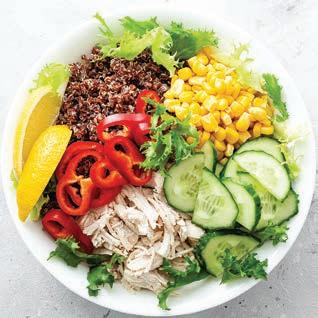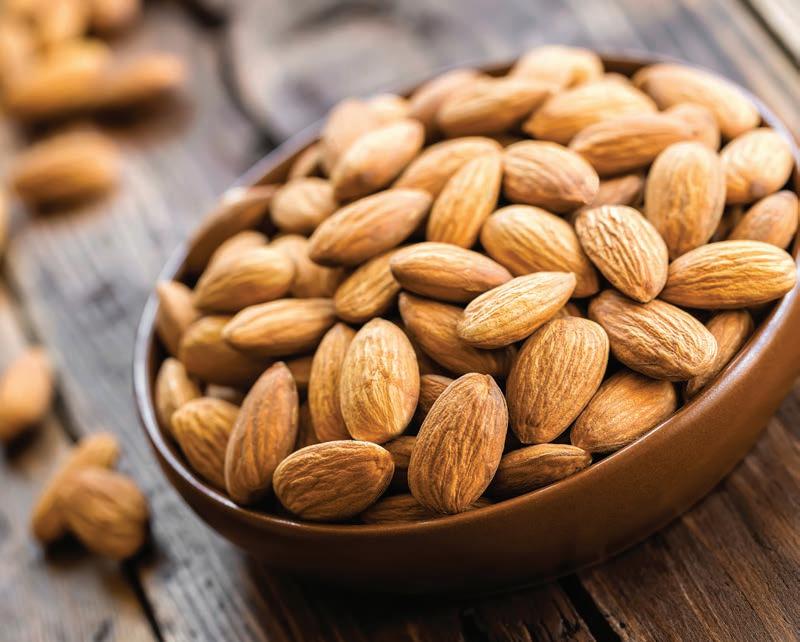
13 minute read
Baby poo
BY DR SAM PETHEN
In the words of children’s author, Taro Gomi; ‘everybody poops’, and, I believe, becoming a parent marks the transition where most people start thinking about poo in a very different way than they ever thought possible!
In the book of the same title, Taro tells us a ‘one humped camel makes a one humped poop, and a two humped camel makes a two humped poop’. Bowel habits are shrouded in mystery and humour, and it can be hard to know what is to be expected and when we should worry.
Constipation is the passing of a hard bowel motion with associated pain and discomfort. It is a common problem affecting up to 30% of children. This article will try to explain what is normal for young babies, and what to do when things go awry.
Breast fed babies can open their bowels from as often as five times a day to as infrequently as once a week. This is all normal! Their poo is soft, and generally yellow/mustard in colour. Formula fed babies usually poo 1-2 times a day and this tends to be firmer and green/brown in colour.
It is not unusual for a baby under the age of 6 months to strain and cry before passing soft stools. This is not constipation and reflects the bowel developing better coordination to pass the motion, normally this will settle with no intervention needed.
When a baby is constipated, their poo will be dry and crumbly, or harder and pellet like.
It is rare for a breast-fed baby to become constipated, but if this is the case, it may be as simple as you baby not getting quite enough milk and needing to be offered more frequent feeds. This happens especially during hot weather. Sometimes formula fed babies can become constipated due to the formula not being made correctly. It’s an easy mistake to make and always worth checking that everyone involved inbmaking the baby’s feeds are making it according to the instructions on the packet. During hot weather, formula fed babies may need to be offered extra drinks, such as cooled, boiled water between formula feeds.
Some solids are more constipating for younger babies. This includes legumes (peas and lentils etc) and high fibre cereals. These foods should be avoided when weaning little babies.
If a baby’s stool has become firmer, they may get a little tear in their anus or rectum, the pain from this might make your baby hold on, which allows the stool to get harder still, and compound the situation. If you are worried your baby might be constipated, please come along to your local Maternal and Child Health Nurse, or your GP. We would be particularly keen to see them if your baby was showing any of these ‘Red Flag Symptoms’ If your baby seems to be constipated under the age of 6 weeks Is losing w eight or not showing good growth Persistent vomiting Passing blood from the anus either on the nappy or mixed in the poo If your baby passed their first ‘meconium’ stool more than 24 hours after birth Your baby will be fully assessed, and diagnoses such as low calcium levels and hypothyroidism will be considered. Usually, though, we are able to give some simple advice, and it will settle quickly. These tips can include, more fluids, gentle tummy massage, or even letting baby relax in a warm bath, which
can act as a muscle relaxant, (just be ready for a little poop in the bath!)
There are some tips circulating which really aren’t a great idea for younger babies!
Prune juice is a popular, effective, gentle remedy for constipation in young children, but is not suitable for babies under the age of 6 months, as it is a
bowel irritant, even if diluted.
We often hear people try brown sugar as a remedy, sometimes added to cereal, but there is no scientific evidence to back this up.
It is important to introduce solids between 4-6 months, as recommended by your Health Professionals. Doing this earlier will not help treat constipation.
So it’s true, every body poops, constipation is common in children, but less so in babies. Normally it will be resolved by them having a little more fluid in their diet, but if you are worried, or they are showing any of the red flag symptoms listed in their article, get them checked!
New clinic opens to help Central Coast Cancer Patients
Recovering cancer patients on the Central Coast have celebrated the opening of a new facility in Erina last night, with the official launch of Cancer Rehabilitation & Lymphatic Solutions state-of-the-art specialised clinic. Having treated hundreds of patients across the region to assist in their cancer recovery, the specialist clinic has been specifically designed to offer cancer rehabilitation and lymphoedema services to patients during and after their cancer treatment. Cancer Rehab & Lymphoedema Therapist and Clinic Founder, Kate Perkins, said the clinic offers a warm and welcoming environment for patients to regain their strength and confidence throughout their cancer treatment and beyond.
“We’re so excited to be able to offer this space to all of our patients and anyone requiring support and assistance during treatment and throughout their cancer recovery,” says Kate.
“The clinic offers a welcoming and supportive environment, with a dedicated exercise floor space, and two comfortable treatment rooms. “Our programs are designed to help people diagnosed with cancer during and post treatment to regain strength, movement and energy through education, as well as individualised and group exercise programs.”
The Clinic also offers internationally renowned PINC & STEEL Next Steps classes; combining Pilates, yoga and cardiovascular exercises specifically

designed to rebuild strength, flexibility and stamina following cancer treatments. “The results reported by those who have completed the PINC & STEEL programs worldwide confirm the positive impact they have and continue to have long after the program has been completed,” adds Kate.
Cancer rehabilitation services at the new facility include: early monitoring for cancer related lymphoedema; patient education relating to fatigue management and exercise benefits; scar tissue management; breathing techniques; lymphoedema risk minimisation strategies; postural and movement patterns.
Lymphoedema services include: the assessment, treatment and management of primary and secondary lymphoedema: prescription of compression garments; Manual Lymph Drainage Massage; Low Level Laser Therapy; patient education; early monitoring and detection of cancer related lymphoedema.
All services are Health Fund claimable, with EPC GP Management Plans accepted.
Cancer Rehabilitation New spacious location dedicated to Cancer rehabilitation; individual & group prescribed exercise programs.

Kate Perkins, B.App.Sci (Occupational Therapy) helps people who have undergone surgery and related treatment for cancer gain recovery of strength, movement, and energy. » Lymphoedema monitoring pre/post cancer treatment » Assessment and management of Lymphoedema » Pinc & Steel Next Steps Exercise Program » Scar tissue management – surgical, adhesive scar tissue, cording » Lymph and Scar Taping techniques » Low Level Laser Therapy » Manual Lymph
Drainage massage » Compression garment prescription » Patient Education » EPC and Health Fund Claimable Call us on 02 4312 7033 to make an appointment
@lymphaticsolutionsau E: info@lymphaticsolutions.com.au https://lymphaticsolutions.com.au
NATUROPATH & NUTRITIONIST AVOCA NATUROPATH
Diana Arundell UNIVERSITY QUALIFIED 0410 465 900
118 Avoca Drive KINCUMBER
Herbal Medicine
Nutrition
Fertility Management
Children’s Health
Wellness Programs
5 ways to
boostyour fertility BY NICOLE SALIBA
Planning to grow your family is an exciting time. Just as it takes time to plan and prepare a baby friendly space at home, it takes time and effort to create a healthy and nourishing ‘first home’ (your uterus!) for your new bub to grow. Although we might think that it all starts at conception, it actually takes three months for an egg to develop to full maturity and be ready to pair with a sperm cell. Therefore what you eat in the months leading up to conception is extremely important for both mum and dad.
Nutrition plays a key role in whether or not we develop healthy, good quality eggs and how nurturing our uterine environment will be, so it’s vital to clean up your diet in the months leading up to conception. If you are struggling with infertility, which affects 1 in 6 Australian couples of reproductive age, there may be good news for you here too. Studies have shown that some causes of infertility, such as irregular or absent ovulation, can be significantly improved through dietary alterations. We may not be in control of all the factors impacting on our situation, such as age, genetics or certain diseases, but nutrition is one of the things we can change.

So what are the top tips for choosing a fertility-boosting diet? 1 Choose to ‘eat the rainbow’ Aim to eat a colourful and varied selection of fruit and vegetables. Antioxidants are a key ingredient for fighting cell damage in our bodies, protecting us from the ‘free radicals’ that can cause oxidative harm in our reproductive organs.
Antioxidants are abundant in our fruit and veggies, with each different colour generally indicating a different type of antioxidant. Very few Australians meet the intake targets for fruit and vegetables, so make an extra effort to actually get your two serves of fruit and five serves of veg every day. Let every meal be an opportunity for getting in some veggies (not just adding them as an after-thought) and keep your fruit bowl topped up with fresh, seasonal fruit.
Need some inspiration? Add mushrooms and wilted spinach to an egg on toast Add strawberries and blueberries to your breakfast bowl Snack on chopped v eggies with hommous C hoose meals that champion veggies more often, such as stir fries, bulked up salads or Mexican meals with plenty of fresh veg Pr ep veggies in advance if you find you are short of time during the week. For example, cube and roast sweet potato and beetroot to add to salads, pre-chop a container of healthy slaw (add the dressing as you go), or premake some veggie patties to cook later in the week.

2Get enough zinc Zinc is vital for cell division and for making new protein tissue, so staying well stocked in this
nutrient is essential for healthy eggs and in preparation for
pregnancy. Shellfish, such as oysters, prawns and mussels are all a great source of zinc that can be included regularly in your diet. Another substantial source is red meat.
Small portions of high quality meat a few times weekly is all that’s needed to keep your zinc intake topped up. Choose lean cuts and opt away from processed or particularly fatty meats such as ham, salami, mince or sausages.
Zinc is also available from a variety of plant sources, including legumes (such as chickpeas or lentils), pumpkin seeds, sesame seeds, nuts and wholegrains such as rolled oats,
bran, seeded bread, quinoa and brown rice. Include these regularly
in your diet by choosing whole grain breads and cereals rather than white or refined options, sprinkling seeds on salads or porridge and choosing legume based meals a few times per week.


3Cut out the added processed sugars Studies have shown that by consuming just one can of soft drink daily, women are 25% less likely to conceive. The reason for this is three-pronged. Not only do excess sugars in our diet contribute to weight gain which reduces fertility, but they also cause a hormone called insulin to be released.
The more sugar we eat, the more insulin enters our blood stream, which in turn disrupts the release and function of our reproductive hormones. Excess sugars are also known to be inflammatory, and are known to inflame the tissue
around the eggs causing damage. It’s recommended that all soft drinks are cut out of the diet as soon as possible, but then working to reduce other added sugars – some of which may not be as obvious.
Choose to replace muffins, cakes, lollies and other desserts

or sweets with healthier options such as fruit, nuts, yoghurt, cheese and grainy crackers or a slice of fruit toast.
Get in the habit of checking food labels for added sugars – if one of the first ingredients is sugar or syrup of some kind, chances are it’s going to be a high sugar product.
Just a quick note: the artificial sweeteners used in ‘diet’ or ‘sugar-free’ soft drinks have also been shown to reduce egg quality, so switching to these products is not recommended.
4Swap your fats Many processed meats and packaged snacks, like crisps and cream biscuits, can be pretty potent sources of saturated fats. Best known for their negative impact on heart health, these saturated fats also contribute to inflammation around our maturing eggs and can cause damage.
In place of these saturated fats, include foods that offer poly- and monounsaturated fats, especially those omega 3 fatty acids found in fish. Omega 3 fats have an anti-inflammatory effect, contribute to healthy egg development and may assist in normalising menstrual cycles in women with polycystic ovary syndrome (PCOS). As saturated fats are found in so many processed foods, it can be best to avoid these foods where possible.
Try to following swaps to make sure you choose healthy fats more often: Swap potato chips or soy crisps for a handful of unsalted almonds, walnuts and cashews Swap croissants and pastries for whole grain toast with natural peanut butter Swap commercial biscuits and cakes for homemade baking, using healthy fats such as olive oil or peanut/almond butters Swap processed deli meats for tinned tuna, salmon or sardines Add oily fish, such as salmon, mackerel and trout to your menu two to three times per week Add a sprinkle of chia seeds to your next smoothie, bowl of muesli or porridge.

5Find YOUR healthiest weight Whether you are carrying too much or too little body fat, it is so important to move towards a healthy weight. If you are much further above the healthy range than you’d like to be, don’t despair – studies show that losing just 5% of your body weight can significantly improve your chances of conceiving.
Create healthy habits by eating and enjoying nutritious foods, and choosing to be more active on a daily basis in ways that are enjoyable to you. Keep accountable to your partner (a healthy diet will only benefit his fertility too!) or a trusted friend. If you ever find your motivation

waning, just remember what you are doing this all for!

The bottom line Opting for a ‘whole foods’ eating plan, with a regular balance of colourful veggies, fruit, whole-grains,
legumes, oily fish and lean
meats is the best place to start when it comes to eating for fertility.
If you would like more specific advice, or have a restrictive diet (such as gluten free or vegetarian) speak to an Accredited Practicing Dietitian can assist with personalised strategies.
Remember that it is recommended that an iodine and folate supplement are also taken before and during pregnancy and that it is important to speak to your dietitian or GP about this.
Nicole is a passionate sports nutritionist and Accredited Practising Dietitian who established her practice Eatsense in 2013 as she has a burning desire to help people, see them happy and watch them thrive. Her vision is to help as many people learn to prioritise themselves, feel their best, enjoy delicious and nourishing food and live a healthy, happy and fulfilling life through her one on one consultations and seminars. Contact Nicole at her West Gosford Clinic on 4323 9100.






